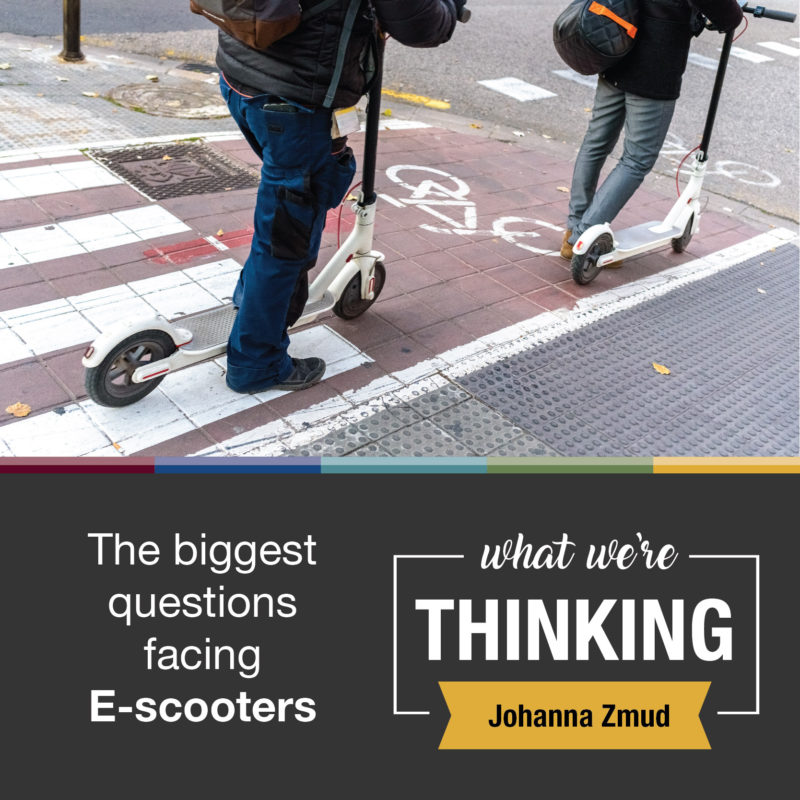Cities across the U.S. have been riding the e-scooter craze for more than a year, so it’s a good time to ask some emerging questions in the midst of urban disturbance. As we do, let’s remember that the first automobiles were also disruptive when they hit busy streets already bedeviled by the confluence of horse-drawn buggies, streetcars, and jittery pedestrians darting among them. We’ve been down this path before.
As the new micro-mobility age unfolds, we should consider a number of factors, with safety being high on the list as we seek solutions.
How are we counting the crashes? The crafting of effective traffic laws depends heavily on the idea of applying enforcement where it’s most needed. The Crash Records Information System — the state database where all roadway crashes are counted, categorized, and analyzed — has no mention of e-scooters, so how can we address a problem that we can’t reliably measure?
How far should we go in protecting other people from scooter users? Should we explore adding SWI (scooting while intoxicated) to our existing laws on impaired driving? And what about texting while scooting, or reckless scooting? Should laws regulate where they should operate? On a sidewalk, bike lane, or city street — but not all three?
How far should we go in protecting scooter users from themselves? Should helmets be required? About half of U.S. states make helmets mandatory for motorcyclists under certain ages. Most have no bicycle helmet laws. Where do scooters fit into that regulatory mix?
In the event of a scooter crash, does the operator assume all liability, or is that burden shared between the rider, distributor, and the manufacturer?
We don’t yet have comprehensive state or national data on scooter-related injuries, though hospitals in some cities are reporting a spike in such cases. Even though the numbers may pale in comparison to vehicular crash injuries and deaths, scooter crashes tend to make headlines. The Centers for Disease Control and Prevention has conducted a first-ever study in Austin, Texas examining scooter crash frequency and severity, and identifying risk factors, based on data from nearly one million scooter trips. Other cities are tracking the problems, too. The University of San Diego Medical Center, for instance, found that virtually zero scooter users were wearing a helmet when they crashed, and nearly half were scooting under the influence. Also, the Texas A&M Transportation Institute, regarding scooter riders as part of the vulnerable roadway user group, is developing guidelines for public agencies to advance safer operations.
Apart from safety, there are other issues, as well. Will new law enforcement needs place a bigger burden on police department budgets? What are the considerations for potential users who are disabled? What impact does scooter use have on transit ridership? What’s the best way to establish “scooter etiquette?”
E-scooters constitute a second new wave of shared mobility, following in the wake of Uber and Lyft. Companies such as Bird, Lime and others even emulated the ride-hailing pioneers’ business model: Drop into a city unannounced and quickly build a loyal customer base to mobilize support and political pressure.
One person’s mobility convenience may be another person’s nuisance, but we shouldn’t allow frustration to distract from a conspicuous truth: e-scooters address a legitimate and persistent mobility quandary. We just have to work through the details and answer all of the right questions to help them find the right niche.
Johanna Zmud is a senior research scientist at the Texas A&M Transportation Institute.
This article was originally published in the San Antonio Express-News, August 15, 2019. (behind paywall)
